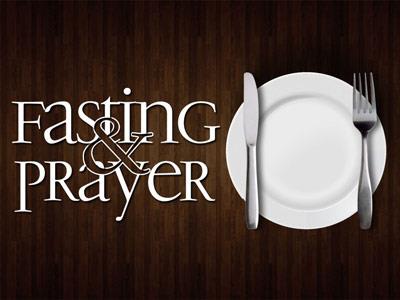-
Pray For Justice Series
Contributed by Matthew Kratz on Jun 2, 2018 (message contributor)
Summary: While Scripture reveals that God is loving, merciful, and gracious—a savior of repentant sinners, one truth about Him that is decidedly unpopular today is that He is a God of vengeance against those who reject Him and salvation in His Son.
Observing common perceptions, it has been said that God created humanity in His image and humanity has returned the favor. People have created gods in whatever form pleases them to accommodate their sinful lifestyles. God rebuked such foolish people in Psalm 50:21: “You thought that I was just like you; I will reprove you and state the case in order before your eyes.” God is who He has revealed Himself to be in Scripture and not what people imagine Him to be. While Scripture reveals that God is loving, merciful, and gracious—a savior of repentant sinners, one truth about Him that is decidedly unpopular today is that He is a God of vengeance against those who reject Him and salvation in His Son. (cf. Dt. 32:35-43; Ps. 64:7-9, 79:10; 94:1-2, 23; 7, 35, 40, 55, 58, 59, 69, 109, 137, 139, and 144. Isa. 34:1–3, 8; 59:17–18; 61:2, 63:4; Jer. 46:10; Mic. 5:15; Nahum 1:2; Malachi 4:1–2.) Jesus described the future time of God’s judgment, cited by futurist during the time of Tribulation as the “days of vengeance” (Luke 21:22. Cf; Rom. 12:19; 2 Thess. 1:6–9; Heb. 10:30). Yet, even God Himself declares, “I take no pleasure in the death of the wicked, but rather that the wicked turn from his way and live” (Ezek. 33:11), because “The Lord … is patient toward you, not wishing for any to perish but for all to come to repentance” (2 Pet. 3:9).
The realization that the Day of the Lord is coming in which God will take vengeance on the wicked is a bittersweet one for believers. On the one hand we rejoice, because God’s glory will be put on display, sin will be done away with, the world will be taken back from the usurper, Satan, and God will be vindicated. But on the other hand, that day will bring about the destruction of the ungodly and their sentencing to eternal punishment. (cf. Rev. 10:8-10). In any event, what constitutes the essence of Christian discipleship in John’s eyes should not be overlooked. As we see in Revelation, 6, every believer in Christ ought to be prepared for martyrdom; for Christians … cannot express their priestly communion with their Lord more perfectly than when they accept the suffering and the glory of martyrdom” (Johnson, A. F. (1981). Revelation. In F. E. Gaebelein (Ed.), The Expositor’s Bible Commentary: Hebrews through Revelation (Vol. 12, p. 475). Grand Rapids, MI: Zondervan Publishing House.).
It is the anticipation of that coming great day of God’s wrath known as the Day of the Lord that is in view in the fifth seal of Revelation 6. The seven seals divide into two groups of four and three. Now that the four horsemen have ridden forth, the scene changes. The opening of the fifth seal reveals an altar in heaven under which are the souls of the faithful martyrs. If the first four seals portrayed the troubled times of the approaching consummation, the fifth supplies an interpretation of Christian martyrdom (Mounce, R. H. (1997). The Book of Revelation (p. 146). Grand Rapids, MI: Wm. B. Eerdmans Publishing Co.).
According to futurists, the fifth seal of Revelation 6:9-11, marks the midpoint of the Tribulation period in bridging the gap between the beginning of God’s wrath in the first half of the Tribulation and its full fury revealed in the second half. Like the horsemen of the first four seals, it also portrays a force. That force is the prayers of God’s saints for Him to exact vengeance on rebellious mankind. They pray that justice will be done. Three features become evident as the fifth seal is unveiled: 1) The Persons Involved (Revelation 6:9), 2) The Petition they Have (Revelation 6:10), and 3) The Promise they Receive (Revelation 6:11).
In understanding how God will bring about justice through the prayers of His saints, we see:
1) The Persons (Revelation 6:9)
Revelation 6:9 9 When he opened the fifth seal, I saw under the altar the souls of those who had been slain for the word of God and for the witness they had borne (ESV)
As with the first four seals in Revelation 6:1-8, “when he”, that is the Lamb of God, the Lord Jesus Christ, who alone has authority to take back the universe; cf. 5:4–5) opened/broke the fifth seal this is another sequence in the unfolding of divine judgment revealed, in which John saw under the altar the souls of those who had been slain. These are martyrs, were killed during the time of all the judgments. Previously we saw these judgements as: the false peace, war, famine, and disease dominating the unbelieving world. As we see now, there will be widespread persecution of believers led by Satan, his demons, and the final Antichrist. In OT ritual sacrifice the blood of the bullock was poured out at the base of the altar of burnt offering (Lev 4:7; Exod 29:12). This blood contained the life, or soul, of the flesh (Lev 17:11). That the souls of the martyrs were “under the altar” is a way of saying that their untimely deaths on earth are from God’s perspective a sacrifice on the altar of heaven.( Mounce, R. H. (1997). The Book of Revelation (p. 146). Grand Rapids, MI: Wm. B. Eerdmans Publishing Co.) As T. S. Eliot said: The greatest proof of Christianity for others is not how far a man can logically analyze his reasons for believing, but how far in practice he will stake his life on his belief. (Barton, B. B. (2000). Revelation. (G. R. Osborne, Ed.) (p. 75). Wheaton, IL: Tyndale House Publishers.)

 Sermon Central
Sermon Central



